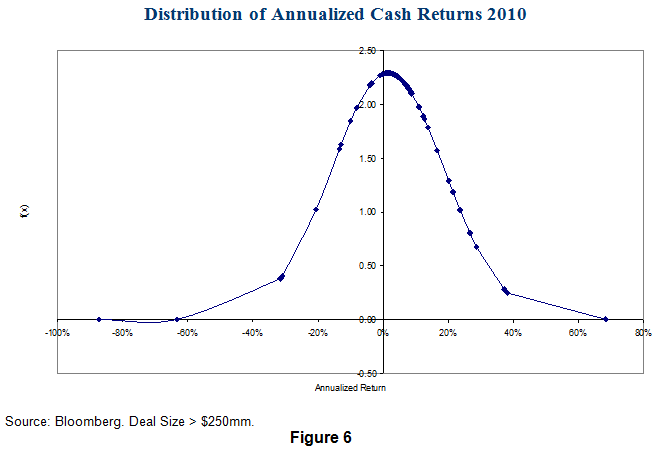Risk Arbitrage Mergers Acquisitions and Liquidations
Post on: 16 Март, 2015 No Comment

Profiting Risklessly through Special Operations
You can opt-out at any time.
Arbitrage (sometimes called risk arbitrage or merger arbitrage) is a special type of investment operation that is meant to generate profit with little or no risk. By taking advantage of special situations that arise in the security markets from time to time, an investor can exploit price discrepancies created by special situations, increasing his net worth regardless of whether the market itself advances. This article discusses two of the more common arbitrage operations — those arising from mergers and liquidations as well as the formula necessary to value the potential return on capital employed.
Corporate Mergers and Acquisitions
When a publicly traded company is acquired, the acquiring entity makes a tender offer to the current shareholders inviting them to sell their stock at a price usually above the quoted price on the exchanges or over-the-counter market. As soon as the tender offer is announced, arbitragers will rush in and purchase the security on the open market then turn around and sell it directly to the acquiring company for the higher price.
A Fictional Example of Risk Arbitrage in Mergers and Acquisitions
Acme Industries, Inc. decides to acquire one hundred percent of Smith Enterprises. Smiths stock trades on the over-the-counter market and is quoted at $15 per share. Acmes management makes a tender offer in the amount of $25 per share. This means that for a few, brief moments, an arbitrager can buy shares of Smith Enterprises for $15 each on the open market, turn around and tender (i.e. sell) them to Acme for $25. Through this operation, the arbitrager has made a quick profit of $10 per share from the
spread that existed between the market price and the tender price.

It is hardly practical to make a significant profit by attempting to jump into the market the moment a tender offer is announced; very few shares could be acquired before the price had been driven up due to the sudden demand flooding the market from would-be arbitragers. Instead, two methods of risk arbitrage developed which I call pre-emptive and post-tender. In the former type of operation, the arbitrager purchases shares of a company which he believes will be taken over in the coming days or months. If he turns out to be correct, he will fully benefit from the spread between the price he paid and the tender offer. The risk he runs, however, is that a company is not acquired. Since he must rely on rumors and gut feeling to predict which companies will be acquired and for what price, pre-emptive arbitrage is inherently more speculative in nature than its counterpart. As a result, it tends to be far less profitable on the whole.
Post-tender arbitrage, however, deals only in situations where a tender offer has already been announced by a potential acquirer. Despite the $25 standing offer Acme has made for the common stock of Smith Enterprise, it may sell for only $24.00 on the market (the reason for this discrepancy is too complicated and time consuming to be of value to the average investor). This difference of $1.00 per share may seem small; looks can be deceiving. Due to the short amount of time the investment is held, the indicated annual return on such a commitment is remarkably high.
Grahams Indicated Annual Return Formula for Risk Arbitrage
L be the expected loss in points in the event of failure;














